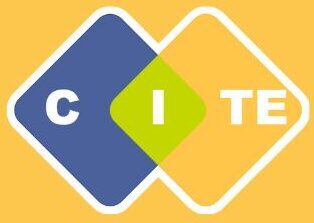See a Google Documents version of this page here, if you’d like to use it as a template for your artifact design.
Due date
EOD Sunday, 8/7
Goal
Create a computing-integrated teaching artifact that you will implement in a course in the Fall. These might include…
- 🌶️ Assignments / Projects
- 🌶️ In-class activity
- 🌶️ Online activity
- 🌶️ 🌶️ Unit
- 🌶️ 🌶️ Fieldwork activity (e.g. observation report)
- 🌶️ 🌶️ 🌶️ Course redesign
- 🌶️ 🌶️ 🌶️ New course
- 🌶️ 🌶️ 🌶️ 🌶️ Scope and sequence across courses
Artifact guidelines
Your artifact should…
- Integrate computing:
- Promote learning outcomes that relate to digital fluency and computing standards
- Help support conversations with your teacher (candidates) about, with, through, and against technology
- Build on the strengths and experiences of your particular learners
- Consider dimensions of equity from our conversations
- Draw on frameworks like the Kapor Center’s Equitable CS framework, NYS CR-SE, or other college-specific one.
- Support the teaching of content across teacher education components and courses
- Focus on supporting teacher candidates to apply knowledge about learners, learning environments, equity and culturally relevant practice, content, instructional practice, professionalis and in Foundations, Methods, Fieldwork
- Support your own development and that of your college/program – This could look like addressing…
- A challenge you observe in teacher candidates’ experience
- Systemic inequity issues in STEM/teacher education
- An area of growth/priority for you or your department
Elements to include
You likely have your own formats and requirements for course planning – feel free to use and draw on those.
No matter what format you use, please plan to include the following elements in your design.
|
Faculty designer(s): Title of Activity/Assignment: Course: Rationale: Questions to generate your thinking:
Learning Goals:
What are the standards involved? (Think AAQEP, ISTE, NYSED, department learning goals or indicators) What computing and/or digital literacies does this artifact integrate, and for what reasons? Summary of the activity/assignment Sample of the activity/assignment
Blurb or write up of the assignment for syllabus How you plan to assess your students’ learning Other resources or materials that you create for this artifact (revised from a template by Laura Ascenzi-Moreno, Brooklyn College |
Logistics
- Draft artifacts due before our PD sessions in August (by EOB 8/7/2022)
- Submit your artifact in the folder for your college linked here.
Design Process
- Gain inspiration for your artifact by consulting a design toolkit
- Gain inspiration for your artifact by attending at least two workshops listed in this catalog. (Registration link sent to your email)
- If you get stuck, schedule a meeting with a CITE team member here. It could help to schedule these with other members of your design team that may be facing similar challenges.
- You’ll work on your design with the support of 2 teams…
|
Design team |
College Team |
|
The people working on the same/similar artifacts to you.
|
The people working at the same institution as you
|
Sharing Out and Getting Feedback
- During PD sessions during the week of 8/8, you will share a completed draft of your artifact, and get more formalized feedback from your design team.
- Sign up for a time to share here.
- Plan to share the core elements of your work, as described in the guidelines above for about 5 minutes.
- There will then be at least 15 minutes for a feedback conversation around your artifact.
Coordinating Artifacts Across Colleges
- Your college team lead will also schedule a one-hour meeting with the CITE team on August 8, 10, or 11 so you and the other members of your college can discuss how the artifacts fit together and ideate strategies for Fall implementation.
At a glance

See the PD document here for a detailed day-by-day view of the design process.


